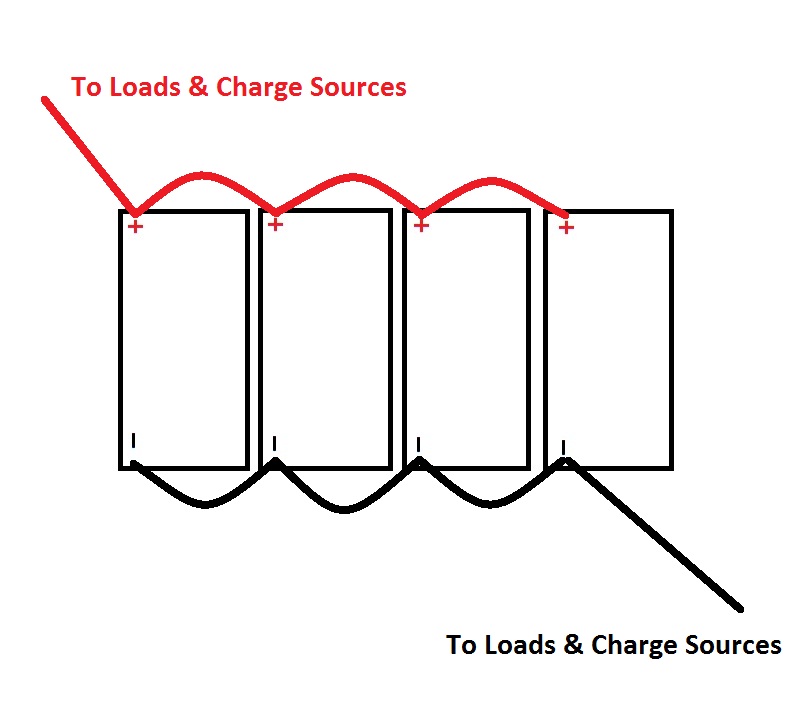My apologies to all for the delay in responding to so many great posts. I spent the day giving S/V Bali Ha'i a thorough bath. Scrub, wash, scrub, REPEAT.

As I am sure many know, it is amazing how much dirt, grease, grim, etc., you can get from a boatyard in just 11 days.
Now, to the issue at hand. Unfortunately, I believe it is time for me to once again remind everyone how truly dumb I am in so many things.

I am not without skills. Unfortunately (or fortunately), they do not transition well to my current lifestyle.
Much of what has been posted is beyond my knowledge level. You guys forget who you are dealing with. I am DUMB.
Now that we have re-established this fact, here is how my electrical system is set up.
My batteries are wired "in parallel" - at least how I understand the words "in parallel" when talking about batteries. The positive (red) terminal of battery #1 is connected to the positive (red) terminal of battery #2. These batteries are then connected to the alternator via another red wire and grounded to the engine block.
I have a Perko "OFF" "1" "ALL" "2" switch.
In my mind (often a difficult place to live

) I think of battery #1 as the "start" battery and battery #2 as the "house" battery.
I really tried hard to figure out the way that Maine Sail recommended the battery bank be set up so that I could avoid having to think of "start" and "house" etc. and switching back and forth, etc. Our Commodore even sent me an email explaining how he did it on his Cape Dory 25D using Maine Sail's method. Unfortunately, for me it is not meant to be (at least not yet) as I still do not get it. I am in the middle of reading a book Maine Sail recommended (
Boatowner's Illustrated Electrical Handbook by Charlie Wing). Maybe by the end of the book........

I think that for the short term I will buy a relatively inexpensive "roll up" trickle charger and do as some posters have suggested - alternate attaching it to battery #1 and battery #2.
Sails get "bent on" tomorrow. Yippee


